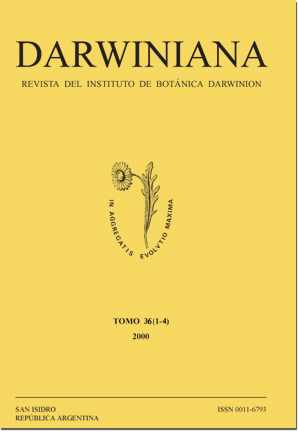Palynological characterization of honeys from the lower valley of the Chubut River (Argentina)
DOI:
https://doi.org/10.14522/darwiniana.2014.361-4.331Keywords:
Pollen, Honey, Honeybees, PatagoniaAbstract
Thirty two samples of honeys from the lower valley of the Chubut River were analyzed. Most samples contained less than 2000 grains/g. Honeys were classified as Tamarix gallica (14 samples), Eucalyptus type (1 sample), Medicago sativa (1 sample) and mixed honey (16 samples). Pollen types were identified using a collection of reference pollen slides. Both the pollen from honeys and the pollen from de reference material were subjected to acetolysis. The most important source of nectar in the lower valley of Chubut River honeys is Tamarix gallica, but the importance of Medicago sativa, in spite of its low intra-sample frequence, is also discussed. Asteraceae and Fabaceae are the best represented families followed by Brassicaceae. Pollen of the native vegetation was well represented and allowed to differentiate these honeys from others in Argentina.Downloads
Published
31-12-2011
How to Cite
Forcone, A., & Tellería, M. C. (2011). Palynological characterization of honeys from the lower valley of the Chubut River (Argentina). Darwiniana, Nueva Serie, 36(1-4), 81–86. https://doi.org/10.14522/darwiniana.2014.361-4.331
Issue
Section
Palinology
License

Starting on 2012, Darwiniana Nueva Serie uses Licencia Creative Commons Atribución-NoComercial 2.5 Argentina .






